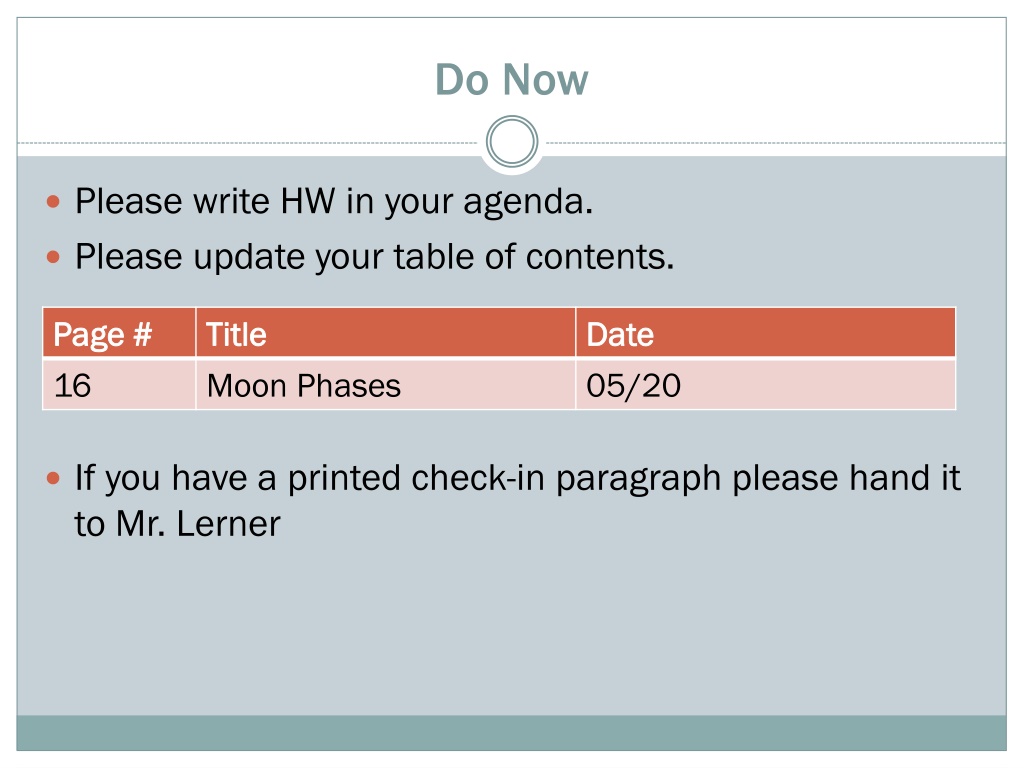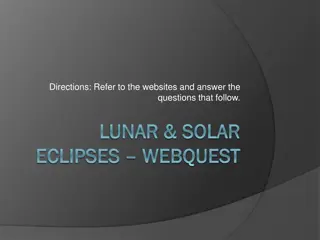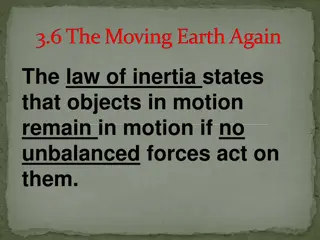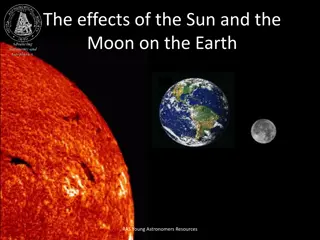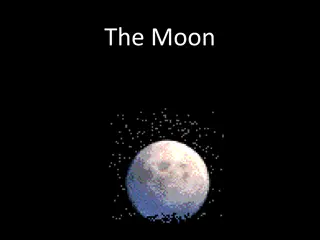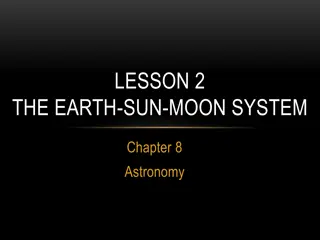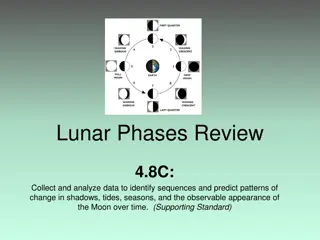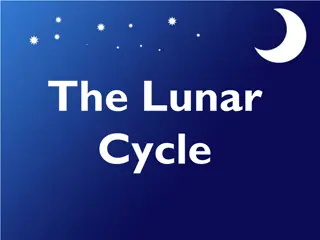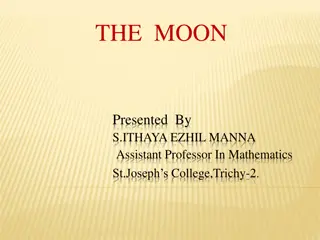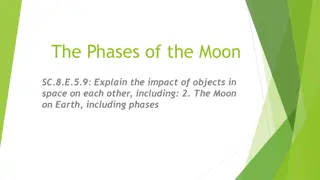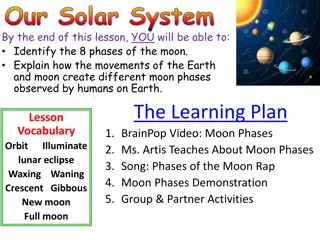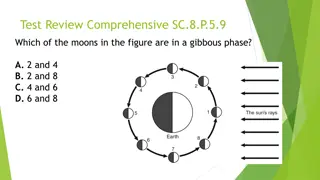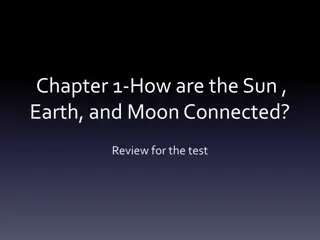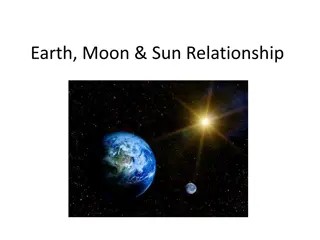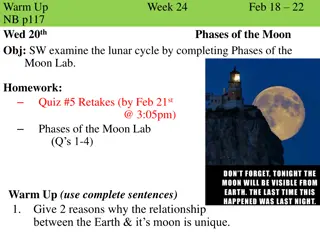Exploring Earth's Moon Phases and Motion
Delve into the intriguing phenomena of Earth's Moon, examining its phases, formation, reflective properties, and orbital motion around our planet. Discover why we always see one face of the Moon, how its appearance changes in the sky, and the captivating lunar cycle that governs its illuminated stages.
Download Presentation

Please find below an Image/Link to download the presentation.
The content on the website is provided AS IS for your information and personal use only. It may not be sold, licensed, or shared on other websites without obtaining consent from the author. Download presentation by click this link. If you encounter any issues during the download, it is possible that the publisher has removed the file from their server.
E N D
Presentation Transcript
Do Now Please write HW in your agenda. Please update your table of contents. Page # Page # 16 Title Title Moon Phases Date Date 05/20 If you have a printed check-in paragraph please hand it to Mr. Lerner
The Moon What causes the moon to change its appearance in the sky? Why do we always see one face of the moon?
Earths Moon A. Seeing the Moon Unlike the Sun, the Moon does not emit its own light. The Moon seems to shine because it reflects light from the Sun. 1. 2.
Earths Moon B. The Moon s Formation Scientists hypothesize that the Moon formed from rock that was in a ring around Earth. This ring formed when Earth collided with an object about the size of Mars. Craters form when objects crash into the surface of another object. Light colored streaks called rays extend in all directions from some craters. On Earth, wind, water, and plate tectonics have erased craters. The Moon has no wind, water, or plate tectonics. Large, flat areas on the Moon are called maria. Highlands are light-colored areas on the Moon s surface. 1. 2. A. B. 3. 4.
Earths Moon C. The Moon s Motion The amount of time it takes the Moon to revolve once around Earth is the same as the amount of time it takes the Moon to make one rotation. One revolution of the Moon around Earth takes about 27 days. The near side of the Moon always faces Earth. The far side of the Moon cannot be seen from Earth. 1. 2.
Earths Moon D. Phases of the Moon A phase is the lit part of the Moon or a planet that can be seen from Earth. Phases of the Moon changes because of the revolution of the Moon around Earth. A lunar cycle the sequence of moon phases takes 29.5 days to complete. 1. A. B.
Earths Moon D. Phases of the Moon More of the Moon s near side is lit each night during the waxing phases. After the first week of the lunar cycle, the Moon s entire western half is lit. B. This phase is called the first quarter phase. C. During the second week of the lunar cycle, when the Moon s near side is completely lit, it is at the full moon phase. 2. A.
Earths Moon D. Phases of the Moon Less of the Moon s near side is lit each night during the waning phases. During the third week of the lunar cycle, only the eastern half of the Moon is lit. B. This phase is called the third quarter phase. C. At the end of the lunar cycle, you cannot see any of the lit side of the Moon, which is called the new moon phase. 3. A.
Moon Phases Activity Using the hula hoops with attached golf balls draw in the empty boxes what that moon phase would look like from Earth. The hula hoop should be rotated clockwise while it is around your head. Remember that you can only see the face of the Moon that is near Earth!
